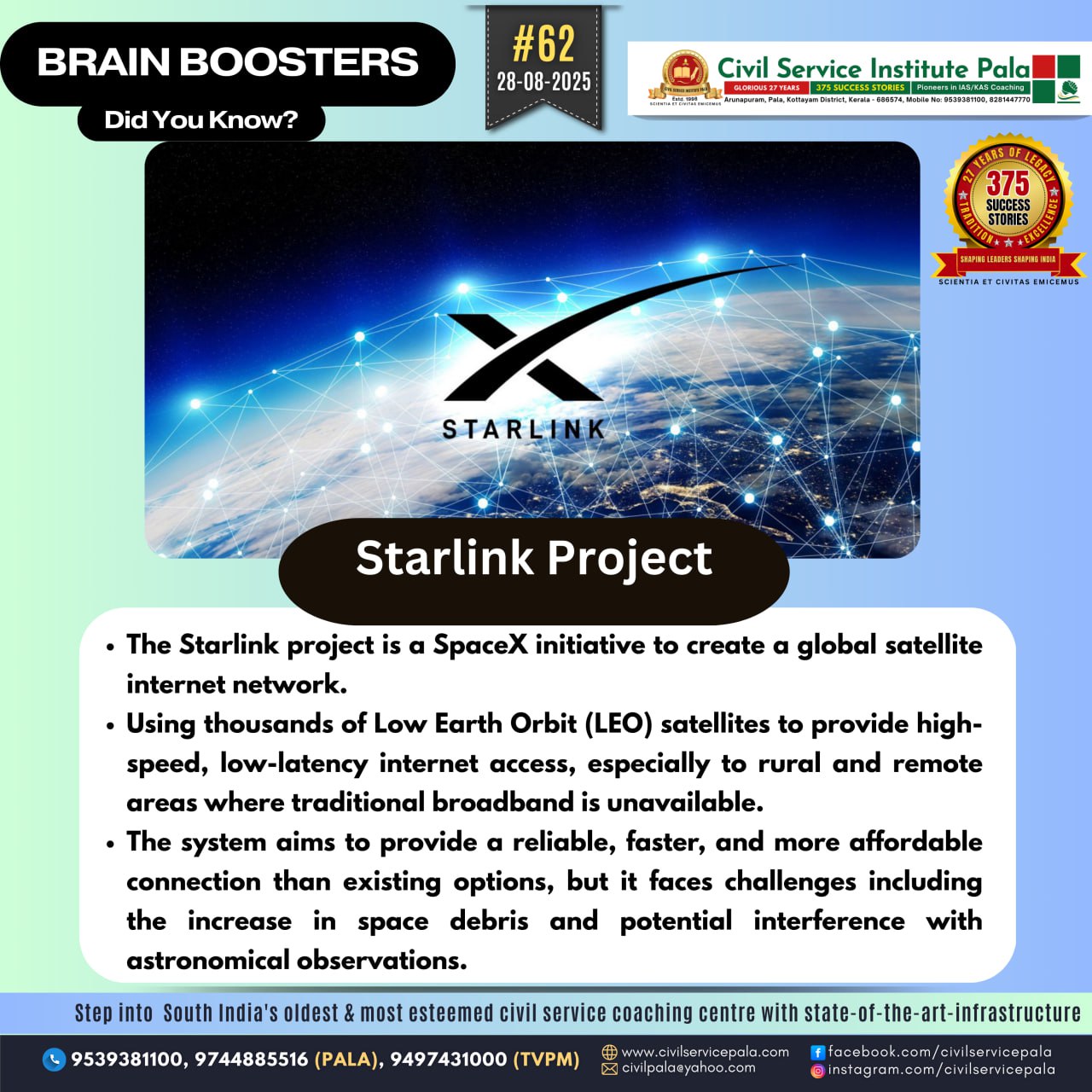
The Starlink Project
The Starlink Project is a satellite-based internet initiative developed by SpaceX, the private aerospace company founded by Elon Musk. Its goal is to provide high-speed, low-latency broadband internet access across the globe, especially in remote, rural, and underserved regions where traditional internet infrastructure (like fiber cables or cell towers) is limited or unavailable.
🔑 Key Features of the Starlink Project:
1. Satellite Constellation
Uses a mega-constellation of small satellites placed in Low Earth Orbit (LEO), about 550 km above Earth.
Thousands of satellites form a network, creating global internet coverage.
As of 2025, over 6,000+ Starlink satellites are in orbit, making it the largest satellite constellation in history.
2. Internet Access
Provides speeds ranging from 50 Mbps to 250 Mbps (and higher in some areas).
Latency (delay) is around 20–40 milliseconds, comparable to ground-based broadband, and much lower than traditional geostationary satellites (which have ~600 ms).
3. User Equipment
Customers need a Starlink Kit, which includes:
A phased-array satellite dish (“Dishy”) that automatically aligns with satellites.
A Wi-Fi router.
Power cables and mounting equipment.
4. Coverage
Initially launched in the U.S. and Canada (2020), Starlink is now available in dozens of countries worldwide.
Aims to provide global coverage, including oceans, ships, and airplanes.
🎯 Objectives of Starlink
Bridge the Digital Divide – bringing reliable internet to rural and remote communities.
Emergency Connectivity – useful in disaster zones (earthquakes, floods, wars).
Support SpaceX’s Mars Mission – revenue from Starlink is expected to fund Elon Musk’s vision of human settlement on Mars.
⚖️ Challenges & Criticisms
Space debris risk: Large constellations increase collision chances in orbit.
Astronomical interference: Bright satellites affect telescopes and sky observations.
Regulatory hurdles: Some countries restrict or ban Starlink due to security or telecom regulations.
High cost: Equipment and monthly fees can be expensive in developing regions.
🌍 Current Status (2025)
Over 3 million users worldwide.
Services expanded to aviation, maritime, military, and government sectors.
New Starlink V2 Mini satellites being launched with improved capacity and direct-to-smartphone capability (to rival traditional telecom towers).Source: https://www.space.com/spacex-starlink-satellites.html
